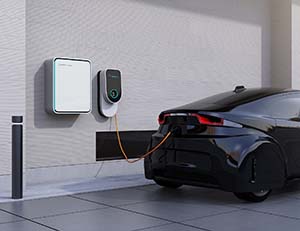WL9005 Application of LDO in handheld medical devices
For those who want to measure and track their blood sugar levels on a regular basis, for example, those who want to control their carbohydrate and sugar intake can do so at home with a glucose meter.
The function of the glucose meter is increasing year by year, and the measurement process is becoming easier and more accurate. With the gradual improvement of measurement accuracy, the need to improve the accuracy of blood glucose meters has become very strong. In addition, it is starting to include additional features, such as the ability to record blood sugar levels measured each day, and connect to a personal computer or smartphone.
In UOE's glucose meter solution, our goal is to achieve a low-noise CMOS operational amplifier to amplify the sensor signal to develop a high-precision glucose meter, as well as efficiently manipulate the complex electronic circuits inside the glucose meter using a power management chip (LDO).

Solution features:
(1) High-precision amplification of small sensor signals using low-noise operational amplifiers.
(2) Saving power by reducing the operating current of the LDO regulator contributes to low power consumption.
(3) By removing switching noise and providing a stable power supply, the sensor signal can be processed with high precision.
(4) Support reduced board space by adding functionality in a compact and lightweight package.
In order to measure the signal, the sensing signal needs to be digitized to measure blood sugar levels. When the analog signal output from the sensor is converted to a digital signal, the AD converter (hereinafter referred to as ADC) is generally used. The accuracy of the glucose meter solution is an important indicator of ADC applications for accurate digital conversion.
In general, high-precision sensors often use sophisticated sensing elements, and their output signals are often tiny analog signals. Therefore, even if the sensor output is input to the ADC as-is, an accurate digital conversion may not be possible in some cases. Using an op amp in this case requires an op amp for amplifying the analog signal from the tiny sensor output to the signal level suitable for the ADC input, so that the noise performance of the op amp itself is minimal to achieve high-precision amplification. In the application of glucose meters, it is also important to reduce power consumption as much as possible to extend battery life. For this glucose meter solution, we recommend the UOE series of precision operational amplifiers.
In order to save power consumption of the unit or to fill the test paper with blood, the measurement operation can be performed using the comparator only when the test paper is coated with blood. In this case, the power supply used as a reference voltage requires small current consumption, small voltage fluctuations caused by temperature, small voltage fluctuations when the battery power supply voltage fluctuations, or small voltage fluctuations when the load fluctuates. By using the UOE High Precision Linear Voltage Regulator (LDO)WL9006/WL9006, low current consumption and high precision reference voltage can be achieved, operational amplifiers for high precision measurement in the sensor input part and LDO for stable power supply, whose low noise performance is important in addition, A stable power supply is also important to control the stable and continuous operation of the MCU. Therefore, separating the operational amplifier and control MCU power supply from other electronic circuit power supplies can improve power stability. Low current consumption and high precision power supplies are made possible by the use of UOE LDO linear regulators.




